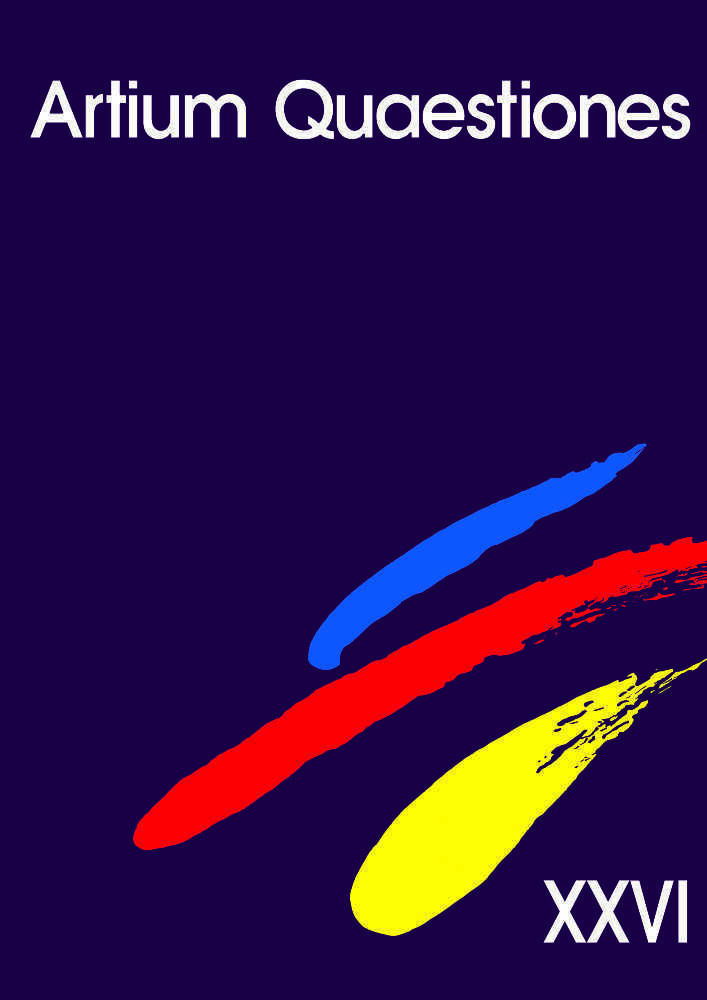Abstrakt
Artists’ studios turned into museums are always specific representations of the past – spatial images reflecting some idea of art and the artist, as well as his or her works, and even the position of the spectator imagined as a visitor, admirer, insider, outsider or pilgrim. When a studio is shown through a film, its status of representation comes to the foreground very distinctly just because of the properties of the medium. A filmic representation of the studio is a result of combining images into a sequence, while individual images attract the spectator’s attention to particular places, areas or aspects of the space of creation, thus making him or her follow a certain trajectory of meaning. What is more, such a sequence does not have to be limited to the studio’s interior since the cinematic montage allows the director to expand it freely by adding some historicizing or contextualizing frames. Finally, film allows one to meet the artist in his or her space through an interview, representation of the creative process or an actor-impersonator. In the first I discuss briefly three issues: the general idea of the present paper and its historical and theoretical contexts. First, my objective is to provide information on my research on Polish documentary film on art in 1948–1989, which was financially supported by the Ministry of Science and Higher Education. I was doing this research with help of a small team of young scholars – phd students and a younger collegue from Institute of Art History at Adam Mickiewicz University in Poznań. In this article I will not address general problems related to the filmic representation of artists’ studios, but discuss several individual cases. Second, the historical context is connected with the hopes of totalitarian states to use mass culture, and particularly film, to manipulate the masses. Even though in particular decades of the 20th century, and in different countries, those hopes were put into practice in different ways, their ideological and practical implementation had a common basis. That basis can perhaps be best described by Walter Benjamin’s idea that a modern wish to regenerate the world requires the destruction of the auratic art and influencing the masses with some other kind of artistic creation that could organize them according to a fixed political purpose. Benjamin believed that the most useful in that respect would be film, which in his opinion was both technical and massoriented. The masses could receive film with little effort so that it would imperceptibly form their mental and imaginative habits, and therefore also a political bias. My point is that the filmic representations of artists’ studios must be approached in the general context of the role assigned to film in the communist Poland, even though one should also remember that artists had various attitudes and censors kept changing their criteria of appropriateness. Still, the research focused on the representation of the artist, his or her studio, and the ideas of art will reveal an officially accepted picture to be transmitted into the public space. One the other hand, one should remember that within precisely defined political limits Polish documentary (and other) filmmakers could ignore commercial aspects and refer to the acknowledged high position of art, experimenting in different ways with a relationship between film and the visual arts. Third, my theoretical context is related to the status of the documentary or, that of reality represented in documentary films. In my view, shared also by a number of scholars, documentaries have an element of creation and their reality is always processed in one way or another. My examples will include studio as office, nature, space of imagination, village hut or cottage, and engine room.
Licencja
Prawa autorskie (c) 2023 Piotr Juszkiewicz

Utwór dostępny jest na licencji Creative Commons Uznanie autorstwa – Użycie niekomercyjne – Bez utworów zależnych 4.0 Międzynarodowe.
Prawo autorskie regulowane jest oświadczeniem autora przygotowanym przez Wydawnictwo Naukowe UAM a od nr XXVIII także umową licencyjną na publikację online zawartą pomiędzy Autorem i Uniwersytetem im. Adama Mickiewicza. Autorzy ponoszą odpowiedzialność za oryginalność zamieszczanego materiału tekstowego oraz regulację praw autorskich dotyczących materiałów ilustracyjnych. W przypadku, gdy materiały pochodzą od redakcji – odpowiedzialność ponosi redakcja czasopisma.
Ten utwór dostepny jest na licencji Creative Commons Uznanie autorstwa - Użycie niekomercyjne - Bez utworów zależnych 4.0 Międzynarodowe.
